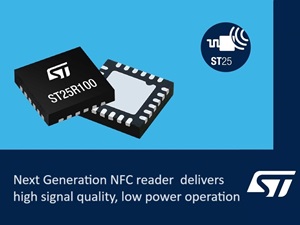
If you’re as obsessed with keeping your gear running smoothly as I am, you’ve probably heard of a UPS. No, not the delivery service – we’re talking about Uninterruptible Power Supplies. As a seasoned tech expert and enthusiast, I’m here to break down everything you need to know about these power-providing powerhouses.
The Heartbeat of Your Tech Setup
An Uninterruptible Power Supply is essentially a battery backup system that keeps your electronic devices running when the main power source fails. It’s the superhero of the tech world, swooping in to save your data and hardware from the villainous clutches of power outages, surges, and fluctuations.
How UPS Systems Work
At its core, a UPS consists of a battery, an inverter, and some smart circuitry. When everything’s running smoothly with your main power, the UPS charges its battery and allows the current to flow through to your devices. But when things go south, it springs into action faster than you can say “power failure.”
The Three Musketeers of UPS Technology
1. Standby (Offline) UPS
2. Line-Interactive UPS
3. Online (Double Conversion) UPS
Each type has its own strengths, but they all share the same noble goal: keeping your tech alive and kicking.
Standby UPS: The Budget-Friendly Guardian
Standby UPS systems are the entry-level heroes of the UPS world. They’re perfect for home offices and small businesses that don’t require heavy-duty protection.
How Standby UPS Operates
1. Normal operation: Power flows directly from the mains to your devices.
2. Power issue detected: The UPS switches to battery power.
3. Switching time: Typically 2-10 milliseconds.
Line-Interactive UPS: The Middle-Ground Maestro
For those of you running more sensitive equipment or living in areas with frequent power fluctuations, a line-interactive UPS might be your best bet.
Line-Interactive UPS Features
1. Voltage regulation without switching to battery
2. Longer battery life due to less frequent use
3. Better protection against power sags and surges
Online UPS: The Cream of the Crop
If you’re running a data center or mission-critical systems, an online UPS is the way to go. It’s the Rolls-Royce of UPS systems, providing the highest level of protection.
Online UPS Advantages
1. Zero transfer time to battery power
2. Constant power conditioning
3. Isolation from power problems
Sizing Up Your UPS Needs
Choosing the right UPS is like picking the perfect CPU for your build – it’s all about matching your requirements with the right specs.
UPS Sizing Factors
1. Total power draw of connected devices
2. Desired runtime during an outage
3. Type of equipment being protected
Here’s a handy table to help you estimate your UPS requirements:
| Device Type | Typical Power Draw (Watts) | Recommended UPS Capacity (VA) | Estimated Runtime (Minutes) |
| Desktop PC | 200-400 | 600-1000 | 5-15 |
| Server | 500-1000 | 1500-3000 | 10-30 |
| Network Switch | 50-100 | 300-500 | 20-60 |
| NAS | 30-200 | 400-800 | 15-45 |
| Router | 5-20 | 50-100 | 60-120 |
UPS Brands: Powering the Industry
When it comes to UPS systems, not all brands are created equal. Let’s take a look at some of the heavy hitters in the UPS market, including some you might not have heard of before.
Top UPS Manufacturers
- APC (American Power Conversion)
- Eaton
- Tripp Lite
- Vertiv (formerly Emerson Network Power)
- Socomec
- Green Cell
Each of these brands has its strengths, but let’s focus on three that stand out: APC, Socomec, and Green Cell.
APC: The Industry Standard
APC has been a household name in UPS systems for decades. Known for their reliability and wide range of products, APC caters to everyone from home users to large data centers.
Socomec: The Industrial Specialis
Socomec might not be as well-known to home users, but in the industrial and commercial UPS space, they’re a force to be reckoned with. They specialize in high-power UPS systems and power switching equipment.
Green Cell: The Up-and-Comer
Green Cell is a relatively new player in the UPS market, but they’re making waves with their focus on eco-friendly, high-efficiency UPS systems and replacement batteries.
Let’s break down how these brands compare:
| Feature | APC | Socomec | Green Cell |
| Product Range | Wide (home to data center) | Focused on industrial/commercial | Growing (mostly small to medium) |
| Reputation | Excellent | Strong in industrial sector | Building, known for batteries |
| Price Range | Medium to High | High | Low to Medium |
| Innovation | High | High | Medium |
| Eco-Friendliness | Good | Very Good | Excellent |
| Availability | Widely available | Limited in consumer channels | Growing availability |
| Support | Excellent | Good for industrial clients | Improving |
| Battery Life | Good | Very Good | Excellent |
Choosing the Right Brand
When selecting a UPS brand, consider these factors:
- Your specific needs (home, office, data center)
- Budget constraints
- Required power capacity
- Desired features (e.g., network management, energy efficiency)
- Availability of local support and service
Remember, while brand reputation is important, the right UPS for you depends on your unique requirements. Don’t be afraid to look beyond the big names – sometimes, smaller brands like Green Cell can offer great value, especially if you’re looking for replacement batteries or eco-friendly options.
For industrial applications, Socomec’s expertise in high-power systems makes them a strong contender. And of course, you can rarely go wrong with APC for general-purpose UPS needs.
Whichever brand you choose, make sure it meets the power requirements of your equipment and provides the level of protection you need. After all, the best UPS is the one that keeps your gear running when you need it most.
UPS Maintenance: Keeping Your Power Protector in Prime Condition
Like any piece of tech, your UPS needs some TLC to keep it running smoothly. Here’s what you need to know about maintaining your UPS.
UPS Maintenance Checklist
1. Regular battery tests
2. Firmware updates
3. Dust removal and cleaning
4. Load balancing checks
Wrapping Up: Power Protection Perfected
There you have it – a deep dive into the world of Uninterruptible Power Supplies. From basic protection to advanced configurations, UPS systems are an essential component of any serious tech setup.
Key Takeaways:
✓ UPS systems provide critical power protection for your valuable tech
✓ Choose between standby, line-interactive, and online UPS based on your needs
✓ Proper sizing is crucial for effective UPS performance
✓ Smart features enhance UPS functionality and integration
✓ Regular maintenance ensures optimal UPS operation
✓ UPS technology continues to evolve with exciting new developments on the horizon
Now that you’re armed with this knowledge, you can make informed decisions about protecting your gear from the perils of power problems. Remember, in the world of technology, an ounce of prevention is worth a pound of cure – and a good UPS is worth its weight in gold-plated circuit boards.


















